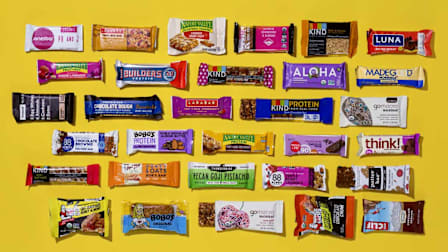How to Eat Healthy on a Budget
There are some surprising places to shop and several ways to get better deals

Whether you’re shopping at Whole Foods or Walmart, you’ve probably experienced sticker shock at the grocery checkout recently. Food costs rose nearly 12 percent in 2022, on average, according to the Consumer Price Index. Yet it’s still possible to eat healthy on a budget.
"There is a misconception that eating healthy must be expensive, but that’s simply not the case," says Danice Tatosian, director of community nutrition at the Food Bank for New York City. Try these strategies for eating well and keeping costs down.
Make a Meal Plan
The average household trashes as much as 32 percent of the food it buys, according to research published in 2020 in the American Journal of Agricultural Economics.
Take a Pantry Photo
Have you ever stood in the aisle of a supermarket wondering whether or not you’ve run out of an ingredient? Snapping photos of your pantry, fridge, freezer, and spice cabinet on your smartphone before you head out can prevent you from buying duplicates you don’t need.
Shop in Person When Possible
People tend to spend less money when they shop at grocery stores compared with shopping online, according to research published in 2021 in the Journal of Nutrition Education and Behavior. (By going in person, you also won’t have to add delivery fees.) And when you head to a store, it’s best to go with a list, Tatosian says, so you’re less likely to make impulse purchases.
The exception may be for some specialty items, like gluten-free or organic foods. For these, discounted online services like Thrive Market and Misfits Market may offer a better bargain than your store. For example, a 32-ounce package of Bob’s Red Mill organic old-fashioned rolled oats was $9.49 at an Albertson’s in Boise, Idaho, but just $7.29 on Thrive Market.
Don't Dismiss Discount Stores
Price-conscious chains like Aldi and Lidl mostly sell only their own brand of groceries. And while all store brands can be a good buy, prices for those chains’ products may be even lower. For example, a recent Consumer Reports’ test of brand name vs. store brand foods found Lidl’s nonfat plain yogurt for $1.99 in Culpeper, Va.; Safeway’s Lucerne brand in the same city cost $2.99.
Use Frozen Produce
Year-over-year prices for fresh fruits and vegetables rose 8.4 percent. Frozen-food prices also increased, though not nearly as much as for fresh produce, so buying frozen can give you plenty of healthy-eating bang for your buck. "Nutritionally, there is no significant difference between fresh and frozen produce," Tatosian says.
Frozen fruits and veggies are also unlikely to spoil. "These can be stored for long periods of time," Conrad says. If you find a good sale or a bulk package of frozen broccoli, berries, or anything else you eat, consider stocking up.
Shift to Seeds
Extreme weather in 2022 affected the harvest of almonds, walnuts, and other nuts. That led to price increases, making those nutritious foods less affordable than they had been. Seeds like sunflower and pumpkin supply many of the same nutrients as nuts, such as healthy fats and protein, at a lower price. At a Target in Jersey City, N.J., for instance, a 6-ounce bag of store-brand walnuts cost $3.49; the same-size bag of sunflower seeds was $1.49. Either works as a snack, a salad topping, or an ingredient for pesto.
Plant-Base Your Proteins
Meat prices are up in general. And the price of a dozen eggs, usually a budget-friendly protein option, has skyrocketed because of an outbreak of avian flu—up 60 percent year over year. So what’s your best bet for lower-cost and better-for-you-protein? Beans. Both canned and dried versions are inexpensive. A can of store-brand black beans at Kroger in Newark, N.J., cost 79 cents for about 3.5 servings; its dried black beans cost $1.99 for about 13 servings. Tofu is also a good buy; 14 ounces of Nasoya organic tofu (4.5 servings) was $2.99 at a ShopRite in the New York area.
Be Choosy About Convenience Foods
If chopping is a challenge, it may be worth paying $6.99 for a pound of cubed butternut squash instead of $1.99 per pound for a whole squash. But if you find pulling together a combo of lentils and whole grains a snap, you’ll spend pennies per serving buying those ingredients instead of paying $4.49 for an 8-ounce package of TruRoots olive oil and sea salt quinoa, brown rice, and lentil blend.
Editor’s Note: A version of this article also appeared in the March 2023 issue of Consumer Reports On Health.
@consumerreports Do you have these foods in your kitchen? Amy Keating, a registered dietitian at CR, explains why you should consider stocking up on them. Learn more at CR.org/food. foodtok goodfood mealideas whatieatinaday
♬ original sound - Consumer Reports




















